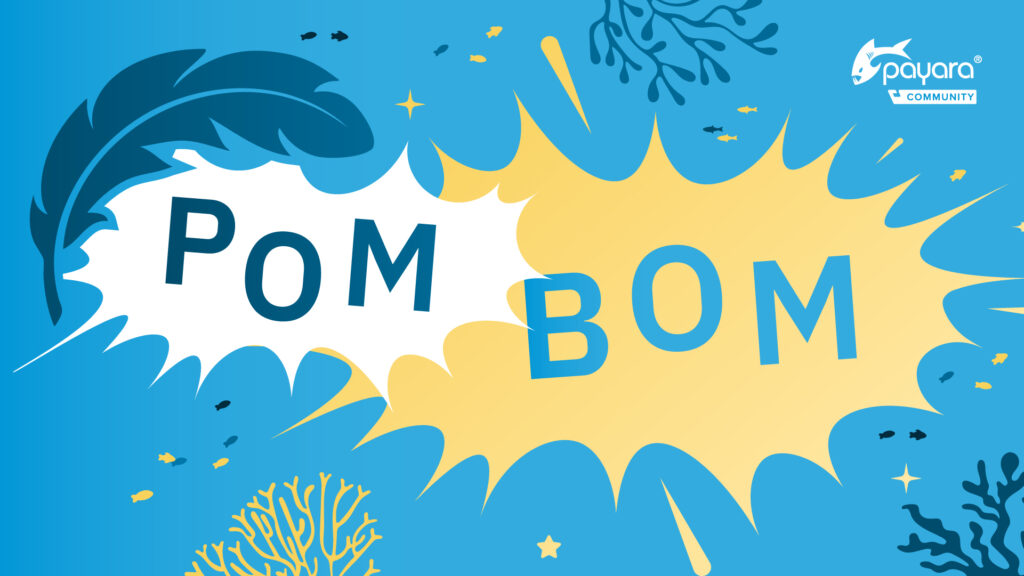 3 minutes
3 minutes
End-of-Life Technology: How to Drive Innovation Without Compromising Stability
When legacy systems approach end-of-life (EOL), enterprise IT teams typically face the choice of moving forward at all costs […]

After two decades as Java’s dominant build tool (no offense to Gradle), Maven is undergoing its most significant evolution. While the official Maven documentation outlines the technical changes in Maven 4, this blog post focuses specifically on what these changes mean for enterprise developers working with Jakarta EE, Spring Boot and Quarkus.
The first thing to know about Maven 4 is that it requires Java 17 or above to run. This applies to your build environment (CI/CD servers, developer machines), but critically, it doesn’t force your projects to use Java 17 or newer versions. You can still compile and target older Java versions using Maven Toolchains, just as before.
For enterprise teams with strict JDK requirements or legacy applications, this means updating your build infrastructure without changing your application code or deployment targets. This separation of build-time and runtime Java versions provides a smooth transition path that maintains backward compatibility.
The main change in Maven 4 is the separation of build and consumer Project Object Models (POMs). When you publish a library to Maven Central with Maven 4, only a streamlined consumer POM containing essential dependency information will be deployed. Your complex build configuration with plugins, profiles and other build-specific details stays private. For library maintainers supporting Jakarta EE, Spring Boot or Quarkus applications, this means:
For the Spring Boot ecosystem, which relies heavily on carefully curated dependency graphs, this cleaner separation prevents build-time concerns from leaking into runtime concerns. Quarkus, with its focus on build-time optimization, similarly benefits from this clearer distinction.
Bills of Materials (BOMs) are the foundation of version management in Spring Boot and Quarkus. Maven 4 elevates BOMs from a convention to a first-class citizen with the dedicated BOM packaging type.
A significant practical improvement is the ability to exclude transitive dependencies within a BOM, addressing a common pain point when integrating multiple frameworks. For example, when combining Quarkus with Spring Boot libraries, conflicting transitive dependencies can now be managed more surgically.
Consider this practical scenario: when building a Jakarta EE application that incorporates Spring Data repositories alongside Jakarta Persistence, you may often face transitive dependency conflicts. Maven 4’s transitive exclusion capability within BOMs enables framework maintainers to create more compatible integration points between these ecosystems.
Enterprise applications rarely exist in isolation. Maven 4’s renaming of “modules” to “subprojects” provides clearer mental models for organizing complex applications.
For microservice applications built with Spring Boot or Quarkus, the automatic versioning feature eliminates redundant version declarations across dozens or even hundreds of services. This seemingly simple change has profound effects on release automation:
The smarter reactor in Maven 4 directly addresses a frustration familiar to any developer who has worked on large Jakarta EE applications—properly resuming failed builds. Now, when a build fails in a deep dependency chain, the -r flag correctly rebuilds only what’s needed rather than restarting the entire process.
Reducing build time directly impacts developer productivity, which is particularly important for Jakarta EE applications that traditionally have longer build cycles. The improvements here are practical and measurable:
For Quarkus, which emphasizes developer productivity and rapid feedback loops, the Maven Shell complements the existing dev mode by making build commands more responsive. Spring Boot developers benefit similarly, especially in projects with many submodules. Payara Dev Mode plugin users will also have much faster build turnarounds with their Jakarta EE projects.
Jakarta EE applications often have complex, layered architectures. Maven 4’s new directory reference properties like ${project.rootDirectory} provide standardized ways to reference configuration files across the application structure. This is particularly useful for:
Spring Boot’s opinionated approach to dependency management becomes even more powerful with Maven 4. The formalized BOM packaging enables Spring Boot maintainers to:
Quarkus’s emphasis on build-time optimization and developer productivity aligns perfectly with Maven 4’s performance enhancements:
While Maven 4 offers compelling benefits, enterprise teams need a practical approach to migration:
| Feature | Enterprise Value | Jakarta EE | Spring Boot | Quarkus |
|---|---|---|---|---|
| Consumer POM | Cleaner dependency chains | ★★★ | ★★★★ | ★★★★ |
| bom Packaging | Framework integration control | ★★★ | ★★★★★ | ★★★★★ |
| Automatic Versioning | Release automation | ★★★★ | ★★★★ | ★★★★ |
| Reactor Improvements | Build stability | ★★★★ | ★★★ | ★★★ |
| Maven Shell | Developer productivity | ★★★ | ★★★ | ★★★★★ |
Impact ratings: ★ (Limited) to ★★★★★ (Transformative)
Maven 4 represents a step toward a more modular, maintainable Java ecosystem. For enterprise teams building with Jakarta EE, Spring Boot or Quarkus, these improvements address real pain points rather than theoretical concerns.
The cleaner separation of build and consumption concerns, improved dependency management, and performance enhancements all contribute to more maintainable codebases and more productive development teams. While the migration requires thoughtful planning, the long-term benefits for complex enterprise applications make Maven 4 a significant advancement for the Java ecosystem. Get started with Jakarta EE today with the Payara Maven dev mode plugin to experience stratospheric developer productivity.
Share:
 3 minutes
3 minutes
When legacy systems approach end-of-life (EOL), enterprise IT teams typically face the choice of moving forward at all costs […]
 5 minutes
5 minutes
November has been one of the busiest months of the year for the Java and Jakarta EE ecosystem. With […]
 3 minutes
3 minutes
Working with enterprise Java databases can sometimes feel like swimming upstream. Jakarta EE 11’s Jakarta Data helps developers glide […]